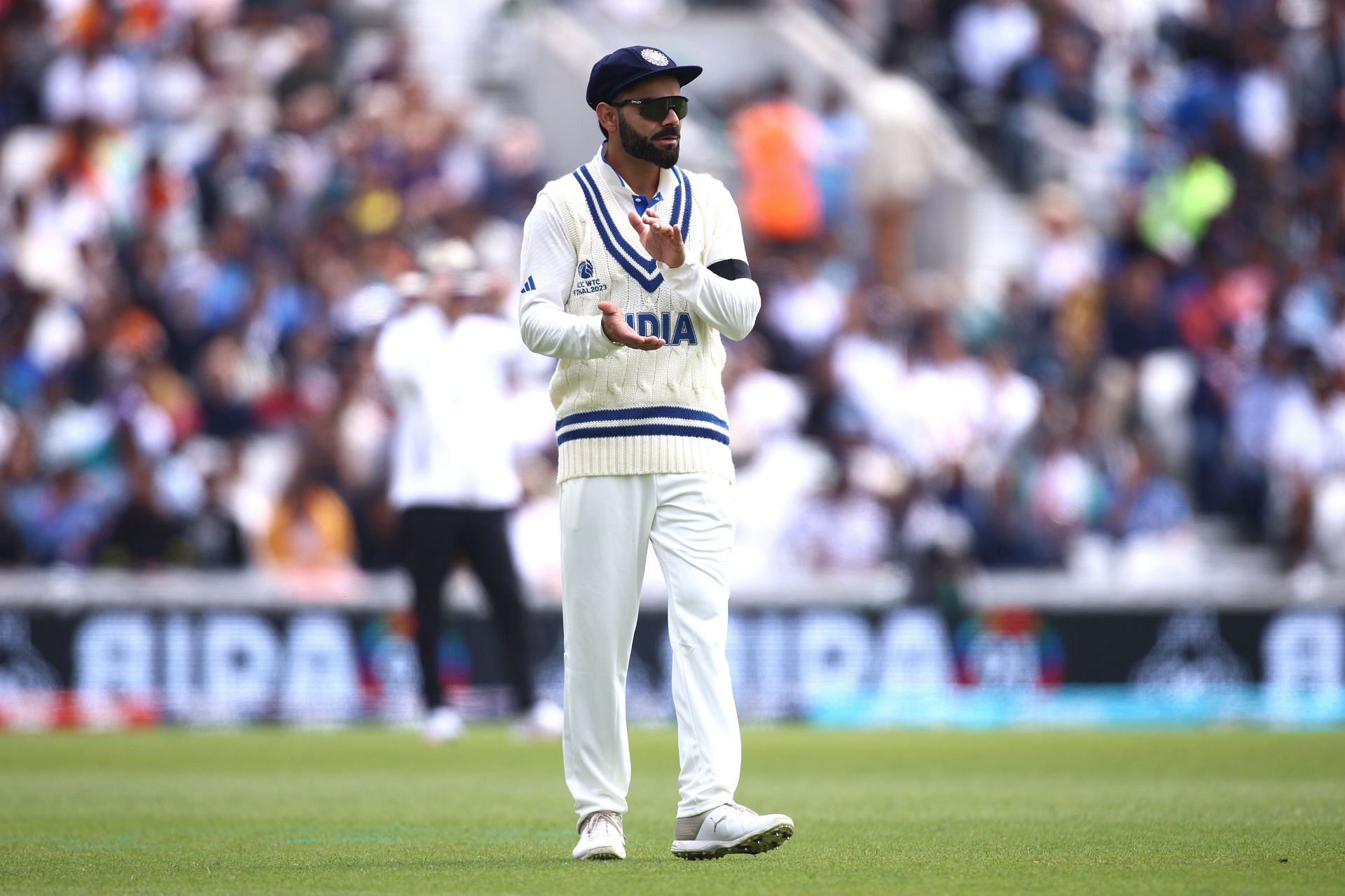
3 reasons why India's Test transition will be a difficult one after WTC final
Team India has endured a disastrous couple of days to find themselves behind at the start of the ICC WTC final against Australia at the Oval.
As things stand at stumps on day 3, Australia lead the game by 296 runs.
With the daunting task of pulling out a miraculous comeback to avoid another ICC event setback, Rohit Sharma's men are starring down the barrel in the wake of indifferent performances with both bat and ball.
Experts and fans have already begun slandering the bowlers and the top-order batters for their pedestrian display in the summit clash. Questions have also been raised about the selection of four pacers at the expense of World no.1 Test bowler Ravichandran Ashwin.
Despite qualifying for the WTC final in a second consecutive cycle, Team India has displayed some holes in their Test performances, particularly in the batting department. The team had only one player in the top 20 of the run-scoring chart for the 2021-23 WTC cycle, leading to many batting collapses during the period.
As several uncomfortable questions rear their ugly head in Indian Test cricket, let us look at three reasons India's Test transition will be difficult after the WTC final.
# 1. Age and poor form of the senior players
The core of the current Indian Test side consists of several players above age 30, and a number of the batters showed a drastic drop in consistency in the previous WTC cycle.
The likes of Rohit Sharma, Cheteshwar Pujara, Virat Kohli, Ajinkya Rahane, Ravindra Jadeja, and Ravichandran Ashwin are all likely at the fag end of their Test careers, having played for over a decade.
Although Ashwin and Jadeja displayed strong performances, particularly at home, over the past couple of years, the same cannot be said for the core Indian batting lineup.
A telling stat reflecting the batting struggles of the core Indian batters was the absence of a single batter from the team in the top 15 of the run-scoring list for the WTC 2021-23 cycle.
The fact that spin-bowling all-rounder Axar Patel boasted India's highest average ( 45.80) over the last two years speaks volumes about the cracks in the Indian top order.
Another baffling stat is none of Rohit, Pujara, Kohli, and Rahane crossed even 1,000 runs in the cycle thanks to poor form and injury in Rohit's case.
The transition to the next generation of young players requires the senior core players to be in good enough form and showcase excellent fitness even at an older age. That helps pass on their experience and the know-how for the newbies for a few years to help them carry Indian cricket forward.
# 2. Young batters struggling to grab their opportunities
As the senior players slowly fade out, It is paramount that the young Indian cricketers take the next step forward and prove their consistency and mettle.
While the team has tried to incorporate young players into the squad to achieve a smooth transition with the perfect blend of youth and experience, the fresh faces have struggled to grab their opportunities in Test cricket.
The absence of India A-tours, thanks to the packed International calendar, has caused the newcomers to struggle in alien conditions.
While Shubman Gill has been the most in-form player in the world in white-ball cricket, he has still not come to terms with Test cricket, averaging only 34.23 in 15 matches.
Mayank Agarwal was another one who had a bright start to his Test career, but faded glaringly with an average of only 27 in his last 12 Tests. This led to him being dropped from the Test side in early 2022.
It was a similar case with Prithvi Shaw, who was found wanting after a decent start to his Test career, leading to his dismissal after only five matches.
# 3. Poor scheduling leading to fitness issues
Another major debacle hurting India's performances in the marquee series/tournaments and away Test tours is the lack of practice matches and recovery periods for the players.
This has led to several players showing poor fitness and missing considerable time, evidenced by only Pujara and Kohli playing in 17 of the 18 Tests in the 2021-23 WTC cycle.
Skipper Rohit Sharma and pace spearhead Jasprit Bumrah played only 11 and 10 of the possible 18 Tests.
Pace-bowling all-rounder Hardik Pandya has not played Test cricket for five years due to numerous injuries and workload management schemes due to recoveries from injury.
Most of the injuries have been suffered by the core Indian players due to the constant cricket being played throughout the year, leading to the body breaking down regularly for the bowlers and the senior players.
The packed calendar also does not allow players to work on upskilling their techniques, play in Ranji Trophy games and manage the recurrence of injuries.
The IPL also reduces the off-time for players to prepare for crucial away tours, evidenced by the one-week gap between the recently concluded season and the WTC final.
India are without Jasprit Bumrah, KL Rahul, Shreyas Iyer, and Rishabh Pant due to injuries in the ongoing WTC final.
Unless the board can prioritize Test cricket and ensure the availability of the most important players for the format, India's transition to the next phase in Test cricket could head towards a downward spiral.